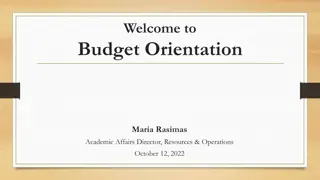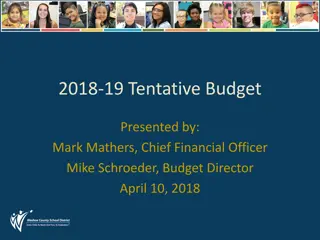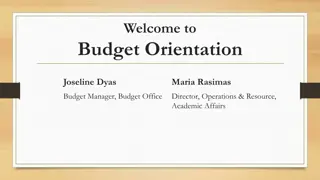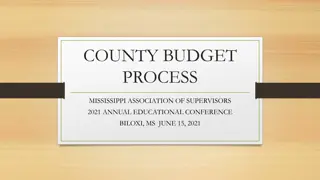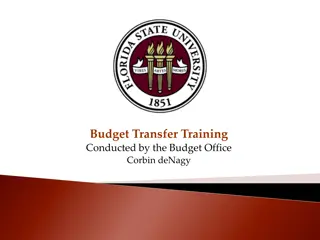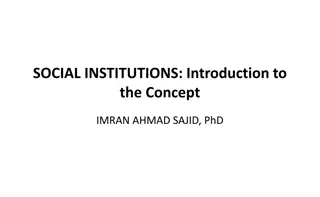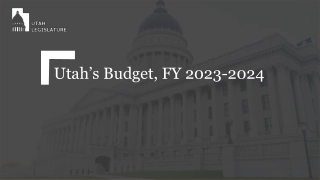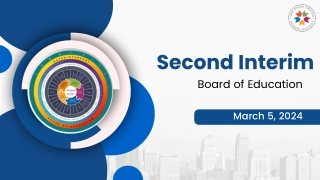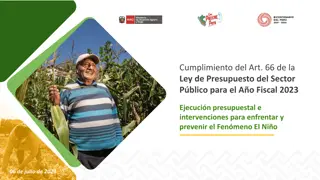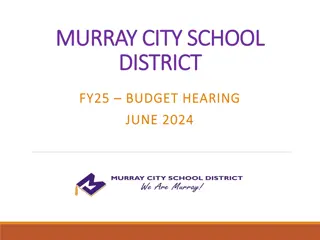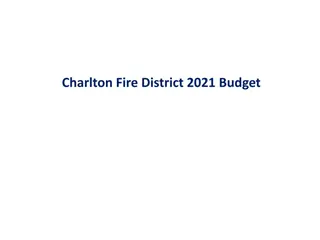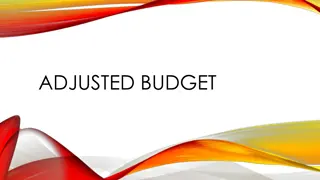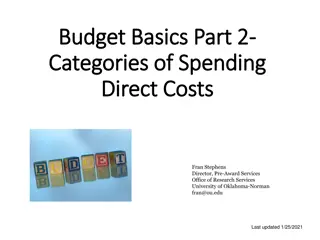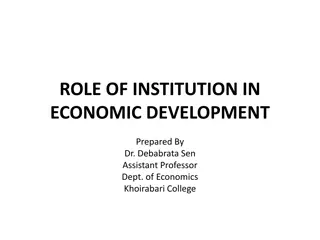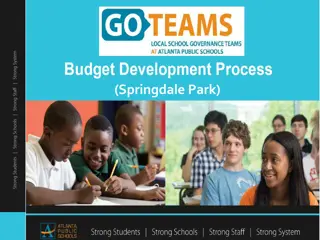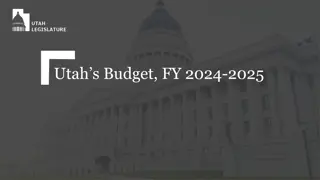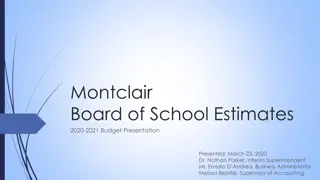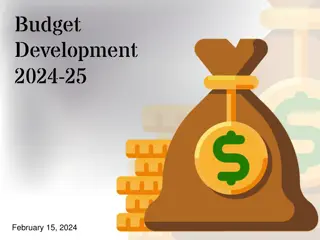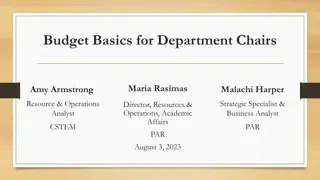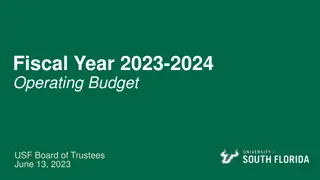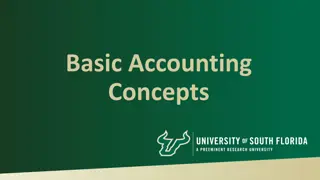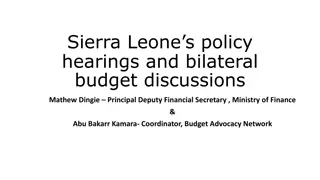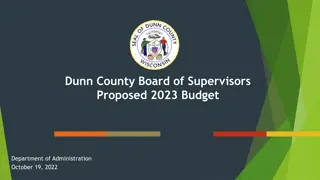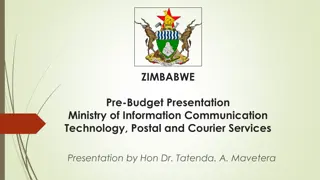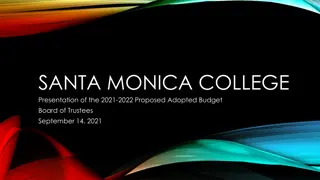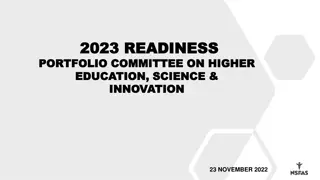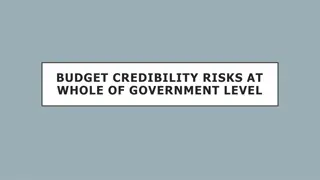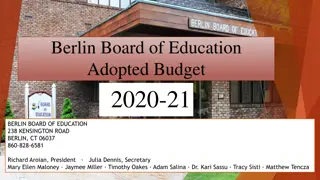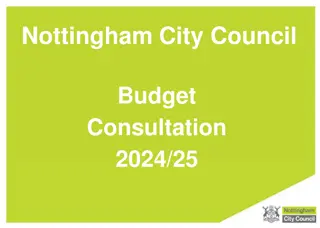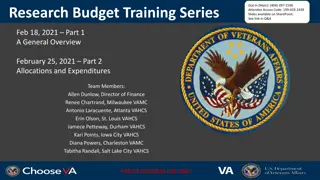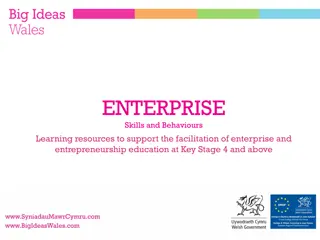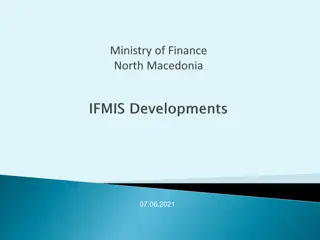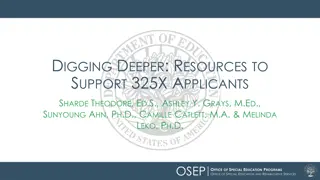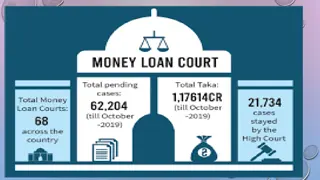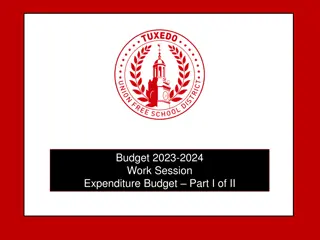Managing Budget Operations in Education Institutions
In the process of developing a budget for educational institutions, conducting a needs assessment, defining priorities, and reviewing data are crucial steps. The budget for 2017-2018 includes revenue projections and details of expenditures on instructional personnel, operations, and adjustments made to the revised budget. An alternative solution to retain K-Teachers is also suggested, emphasizing the importance of personalized learning experiences and effective allocation of resources.
Download Presentation

Please find below an Image/Link to download the presentation.
The content on the website is provided AS IS for your information and personal use only. It may not be sold, licensed, or shared on other websites without obtaining consent from the author. Download presentation by click this link. If you encounter any issues during the download, it is possible that the publisher has removed the file from their server.
E N D
Presentation Transcript
Benchmark Budget Defense Michelle Williams EAD-510 8/07/218
Process of Developing a Budget Conduct a Needs Assessment and define prioritized list Gather a Committee of Steak- holders Develop a Vision/ Mission Review the Data Create Budget
Budget for 2017-2018 Income Revenue Projections 2017-2018 State Funds 4,580,10 Local Funds 2,359,200 Federal Funds 445,268 Total Revenue 7,384,578
Budget Operations Expenditures Instructional Personnel 54- Gen Ed. Teachers 4 -Sped Teachers 1- Manager of Counseling 8-Advisory Teachers Total instructional Personnel 4,057,956 Average Monthly Salery-39,900 Average Monthly Salery-39,000 Average Monthly Salery-60,500 Average Monthly Salery-36,750 Average Monthly Salery-243,050
Budget Operations Expenditures Cont. Operations Furniture & Equipment Office Supplies Copier & Reproduction Computers and Software Communications and Telephone Postage 5,255,088 52,763 20,000 5,000 5,400 30,000 52,100 Other Testing and Assessment Travel and Conferences 110,000 125,000 Personnel Operations Total Expenditures 7,354,602 Total Revenue 7,384,578
Revised Budget Operations Funds Allocated 52,763 Adjustments Furniture -30,000 Copier Reproduction Communications and Telephone 5,000 -3,000 30,000 -5,000 Office Supplies 20,000 -15,000 Postage 52,100 -15,000 Testing and Assessment Travel and Conferences 55,000 -5,000 50,000 -5,000
Adjusted Operation Budget Cut by 10% Personnel Operations Total Expenditures 7,358,602 10% Cut Actual Amount Cut Surplus 73,586 78,000 4,414
Alternative Solution for Keeping K- Teacher Reasons for Keeping Position Student to teacher ratio will increase Less personalized learning experience K-Teacher s livelihood will be lost Solutions Reevaluate positions where teachers are being paid to take on another duty. Cut duties that are not necessary to run the school Give physical text books to only special education students Insure that all students are accounted for during semiannual head count-We need all funds for all students.
Students Needs are Priority All students are being provide the resources to be successful in their virtual education environment. Class sizes will remain small. Qualified teachers will remain in place. Budget is developed based on students needs.
NCCA Mission Statement The mission of North Carolina Connections Academy (NCCA) is to empower children with knowledge, skills, and character traits to be successful in their education through an engaging, personalized learning experience in a full-time virtual school.
Monitor, Evaluate and Implement Meet monthly with budgeting team. Allow all parties to have input. Allocate stated funds to designated areas. Team makes sure that all monies spent are related to goals and mission of the school. Make adjustments as needed. Pull from areas that seem to have excess.
Using Human, Fiscal, and Technological Resources to Manage School Operation The budget is based on our school s mission which is to empower students and create 21st century ready students. Students learn virtually. All instruction and course work is delivered through technology. The day to day operation of NCCA is managed though the board, superintendent principals at the elementary level, middle school level and high school level.
Political Initiatives and Emerging Tends Virtual Schools have grown in the United Stated over the past few years. Keeping Pace-conducted research on virtual schools. North Carolina s virtual school began with high school. NC opened 2 elementary - high school virtual schools in 2014.
Community Resources Local Business Donations Local Community Volunteers Churches Colleges Fundraisers Big Brother Big Sister Programs Goodwill Foundation Community Centers
References Barbour, C. (2012). Using data to realign resources. Principal Leadership, 13(1), 24-28. Kathie, K. (2017). Creating Budgets with Stakeholders in Education. Retrieved January 28, 2018 from, https://study.com/academy/lesson/creating-budgets-with- stakeholders-in-education.html Knudsen, K. (n.d.). Creating Budgets with Stakeholders in Education. Retrieved February 1, 2018, from https://study.com/academy/lesson/creating-budgets-with- stakeholders-in-education.html Sorenson, R. D., & Goldsmith, L. M. (2013). The principal's guide to school budgeting (2nded.). Thousand Oaks, CA: Corwin. Watson, J., & Ryan, J. (n.d.). Keeping Pace with K-12 Online Learning: A Review of State-Level Policyand Practice, 2007.


